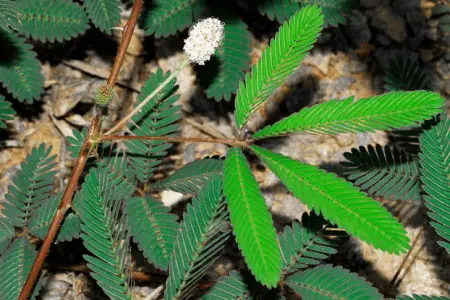We all know that leaves help plants turn the sun’s life-giving rays into food. Leaves that fall into to the ground not only help protect trees from the winter cold, but they also help store up food for the tree. The humble yet extremely important leaf has two basic forms: simple and compound. This classification is determined by how the blade of the leaf is divided. Read on to find out more.
Summary Table
| Simple Leaves | Compound Leaves |
| Have single leaf blades | Have separate, smaller leaf blades called leaflets |
| Have an axillary bud near the stem and petiole | Features a rachis where leaflets are attached |
Definitions

A simple leaf has an undivided lamina (or blade). The shape of the leaf is often made of lobes with gaps that don’t reach the main vein. In plants and trees with simple leaves, a single leaf blade always grows on twigs, attached with the help of a petiole. A single leaf blade is always attached to a twig and is never divided into groups of smaller leaflets. This kind of leaf has an axillary bud close to the point where it meets the stem (i.e. axil).
The most common examples of trees that grow simple leaves in North America include maples, birch, cherries, elms, and oaks. These trees have a single leaf arrangement.
A simple leaf can also have a toothed edge or what is called an “edge margin,” which may have lobes or not. However, leaves that do have lobes have gaps between them that do not reach the midrib or main vein.

Compound leaves have blades that are composed of subdivided and distinct parts called “leaflets” that are further divided along either a main or secondary vein. These leaflets are attached to a rachis – the middle vein of a compound leaf. Each leaflet may look like a simple leaf, but can be easily be determined to be compound by the absence of an axillary bud where the rachis meets the stem. Some higher families of plants such as Fabaceae have compound leaves. Although there is an axillary bud in a compound leaf’s axil, the leaflets do not have one.
Simple vs Compound Leaves
In most cases, it is easy to tell the difference between simple and compound leaves just by taking a closer look.
Simple leaves have a single leaf blade that is connected by a petiole to a twig. The leaf blade is not divided into smaller, individual leaflets. Unlike simple leaves, compound leaves are divided into separate blades called leaflets. These leaflets are attached to a rachis or what is also known as a middle vein. In simple leaves, an axillary bud is present near where the stem and the twig meet.




